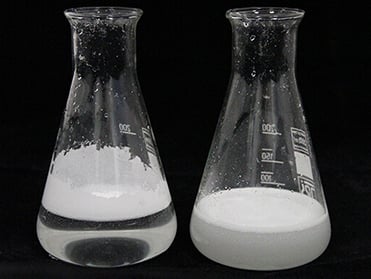Plasma Treatment Articles
Plasma Coating
|
2 min read

In manufacturing and research today, there are often times when a need arises to shift a surface to be more hydrophilic. This need for a hydrophilic shift in surface energy is usually desired to increase wetting of a fluid. This increase in wetting is typically desired to increase bond strength in an adhesive interface, drive a desired surface fluid interaction, or bond parts covalently without an adhesive. In this article we will discuss this process in more detail.
 What makes a surface hydrophilic?
What makes a surface hydrophilic?A simple answer to this question is that a hydrophilic surface is any surface that fluids will wet to, specifically water. It can however often be challenging to acquire this characteristic. The shift in fluid wetting can be driven by an increase in surface energy or shifting the polar component of the material. A polar component is a coulombic interaction between permanent and induced dipoles that interact between the molecules of a material.
There is often confusion between the specifics between hydrophilic vs. hydrophobic surfaces. Generally, a surface is hydrophilic when a surface attracts (or wets) to a fluid due to having a contact angle significantly less than 90 degrees. A surface is considered hydrophobic when it repels a fluid due to having a lower surface energy than the fluid. On a hydrophobic surface, water droplets will typically exceed a contact angle of greater than 90 degrees.
Hydrophilic materials are very rare throughout the materials industry. A couple examples would include glass, cellulose, and textiles that are considered breathable. The fact that not many materials are hydrophilic creates a need to modify other materials to achieve this property. Materials with hydrophilic properties have better adhesion and better bonding properties. Manufacturers want to make the surface of materials hydrophilic to improve overall product reliability.
A common question is how to make a hydrophilic coating. Manufacturers can make a surface of a material hydrophilic by plasma coating. The easiest way to make a surface temporarily hydrophilic is using plasma activation. This high surface energy condition is temporary due to the water vapor or humidity in the air. Over time, this water vapor will bond to the high surface energy of the plasma treated surface which will lower the surface energy to the same level of the water. When this water bonds to the surface of the material, it will inhibit the subsequent adhesive or coating and that is why the activation is temporary. Performing the bonding or coating application within 45 minutes of activating the material is the best manufacturing approach.
Manufacturers can make a surface permanently hydrophilic by plasma coating with polyacrylic acid or vinyl acetate acid as the plasma feed stock. This is an option for manufacturing in certain applications. There would be added costs and process time when using a coating in relation to a simple activation.
Hydrophilic coatings are used in many applications. Manufacturers may want to treat their parts with a hydrophilic coating if there is a need to store them for a while before coating or applying an adhesive. An example in this industry would be bodily fluid testing, like is shown in the image below of a treated test swab and an untreated test swab. This industry requires a test area to attract fluids for quality testing. This is achieved by applying a hydrophilic coating with a plasma system. Another product where plasma coating with a hydrophilic monomer is beneficial is respirators. Respirators will require a fluid to wet to the surface so that it dissipates. Fabrics or garments can also have hydrophilic surfaces in order to wick perspiration away from athletes that wear these garments.

Hydrophilic coating of materials is an important capability for manufacturers in many industries. These coatings will give manufacturers the flexibility to use materials that are not normally hydrophilic in nature but need them to be. Hydrophilic coatings or treatments enhance product reliability in processes using product coatings and adhesives.
Interested in learning more about how coatings enable manufacturers to improve the quality of their products? Please consider downloading our eBook titled "The Manufacturer's Plasma Coating Playbook" to learn about Hydrophobic surfaces and other coating applications. If you are interested in speaking to an expert in plasma applications, please consider reaching out and scheduling a plasma treatment overview discussion.
Plasma: +1 (248) 761 9253
Distribution: +1 (248) 549 8600
Fax: +1 (248) 549 3533
info@thierry-corp.com
Comments